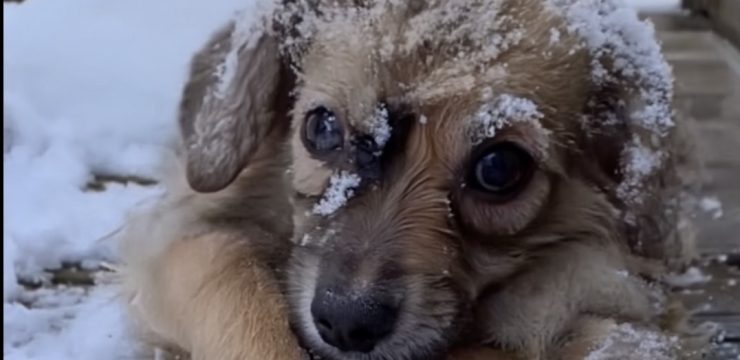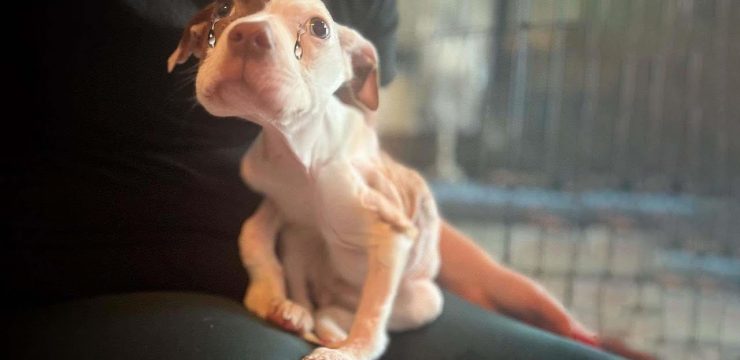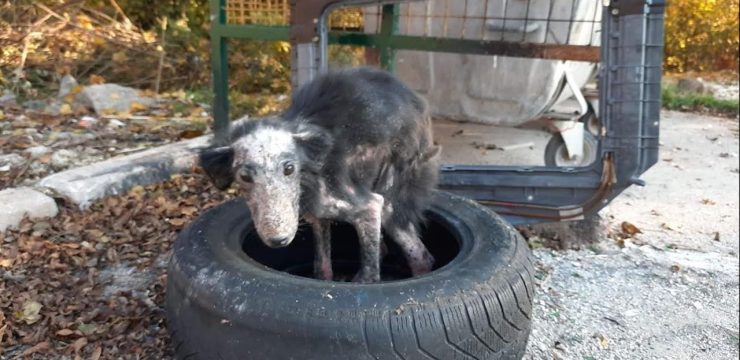The story begins on a quiet, lonely mountain road, the kind where the only sound is the crunch of gravel beneath a car’s tires and the soft rustle of wind through the trees. As a man drove down that desolate stretch one late afternoon, something in the ditch caught his eye—a small shape, motionless at first, then trembling slightly. When he slowed down to look closer, his heart sank. There, lying among the weeds and scattered trash, was a dog. Someone had tied a thick, heavy rope around his neck and strapped a muzzle tightly over his mouth. He couldn’t eat, couldn’t drink, and could barely breathe. Yet, in that hopeless state, he still looked up every time a car passed, tail twitching, eyes bright with one desperate wish—that the person he loved would come back for him.
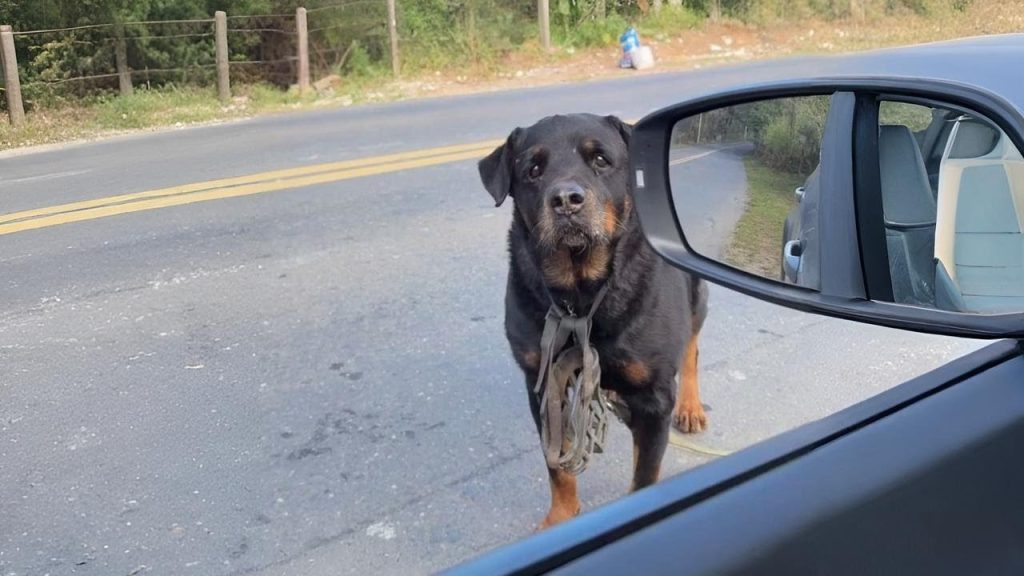
The man pulled over, feeling a lump form in his throat. He wasn’t equipped to take in another animal—his small shelter back home was already full—but there was no way he could just drive away. He found an old can of food in his car and gently offered it to the dog. The poor creature struggled to eat, still muzzled and weak, but wagged his tail with a kind of cautious gratitude. The man could see it in his eyes—the dog was starving, thirsty, and broken, yet still trusted humans enough to accept kindness. Knowing he couldn’t leave him there alone, he made a call for help to a local rescuer he knew.
By the time she arrived, night had already fallen. The mountains were cloaked in darkness, the air heavy with quiet, and the headlights of her car cut through the cold mist. She expected the worst—that the dog might have wandered off or collapsed. But there he was, still waiting in the same spot, as if holding on to a silent promise. The moment she opened her car door, something incredible happened. Without hesitation, the dog trotted toward her and climbed right into the passenger seat. No fear, no resistance—just a quiet understanding, as though he somehow knew she had come to save him.
As they drove away, she spoke softly to him, telling him he was safe now, that no one would ever hurt him again. For the first time in who knows how long, he closed his eyes and rested his head on her lap, finally letting himself relax. The warmth of that moment—the simple act of trust—was enough to move her to tears. It was as if he had been waiting all along for someone to say, “You matter.”
Back at his new safe haven, under the gentle glow of a porch light, his rescuer finally removed the muzzle and the rope. He didn’t growl, didn’t flinch—he just looked up at her with those deep, soulful eyes, full of quiet relief. As he drank water for the first time in days, it was clear he understood he had been given another chance. But the most heartbreaking discovery came a little later. When she gently brushed the dirt and debris from his coat, she realized he wasn’t a stray at all. His fur was once well-groomed, his nails trimmed, and when she told him to “sit,” he did so instantly. When she said “lay down,” he obeyed again, tail thumping softly on the floor. This was a dog who had known love, who had once belonged to someone, who had been taught to trust—and then cruelly discarded like he meant nothing.
A visit to the veterinarian confirmed what she already suspected. He had been neutered and was in otherwise good health, aside from dehydration and minor injuries from the rope. It was clear that someone had cared for him once. But how could anyone look into those gentle eyes and decide to abandon him that way? The thought weighed heavily on her heart.
She decided he needed a name—a name that symbolized not what he had suffered, but the strength he carried through it all. She called him Samson. It fit perfectly. Despite everything, Samson’s spirit remained unbroken. Even in his weakest moments, there was a quiet power in him, a will to live and to love again.
Over the next few days, Samson began to heal. He received medical care, nutritious food, and, perhaps most importantly, affection. His rescuer gave him his first real bath in who knows how long. As the warm water rinsed away layers of dirt and pain, his golden-brown fur began to shine again. He stood patiently, eyes half-closed, almost smiling as gentle hands scrubbed away the memories of neglect. That night, wrapped in a soft blanket, he fell into the deepest, most peaceful sleep—a sleep free of fear.
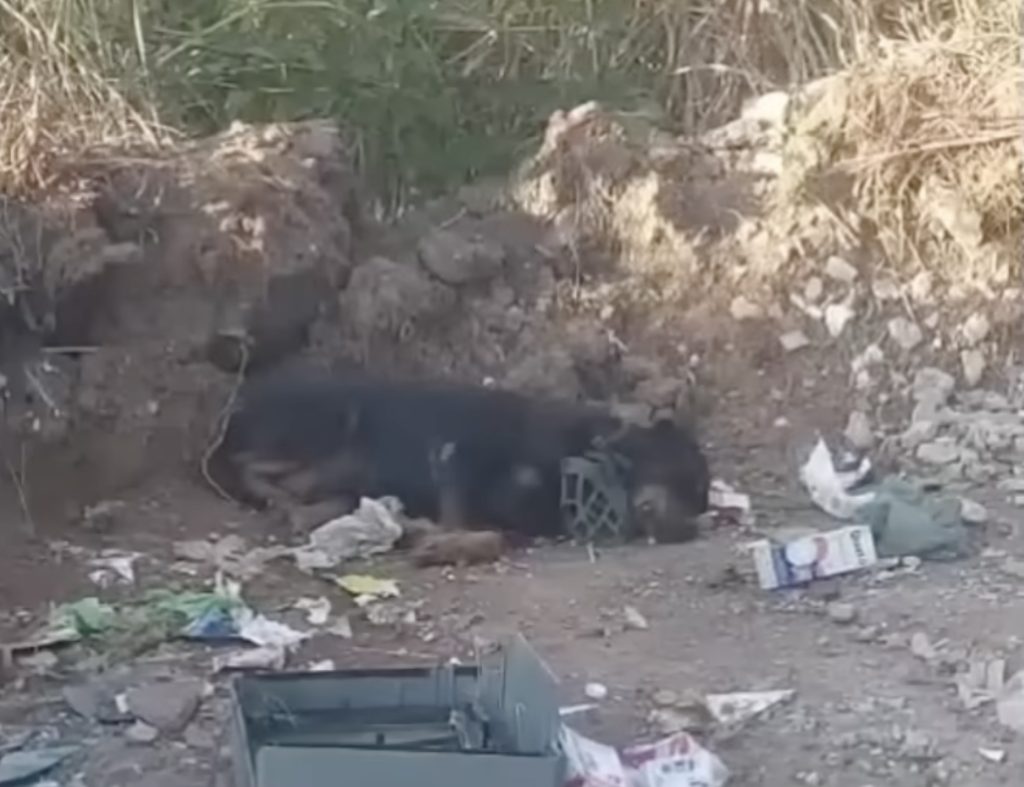
Each morning brought a new sign of life returning to him. His tail wagged a little faster, his steps grew steadier, and soon, he began to play again. The first time he chased a ball across the yard, clumsy but joyful, it was as if he was rediscovering what happiness felt like. He rolled in the grass, barked softly at butterflies, and nuzzled his rescuer’s hand as though to say, “Thank you.”
Watching him transform was like witnessing a miracle. The frightened, frail dog from the ditch had become a symbol of resilience. Samson’s story was no longer about abandonment—it was about healing, trust, and the power of compassion. For every tear that had fallen on that lonely mountain road, there was now laughter and love. His journey reminded everyone who followed it that even the deepest wounds can heal with patience, kindness, and care.
In time, Samson grew strong, confident, and full of life. The light had returned to his eyes, and his tail never seemed to stop wagging. The same dog who once waited in the darkness now basked in the sunshine, free and happy. He had found his second chance, and through his story, countless hearts were touched.
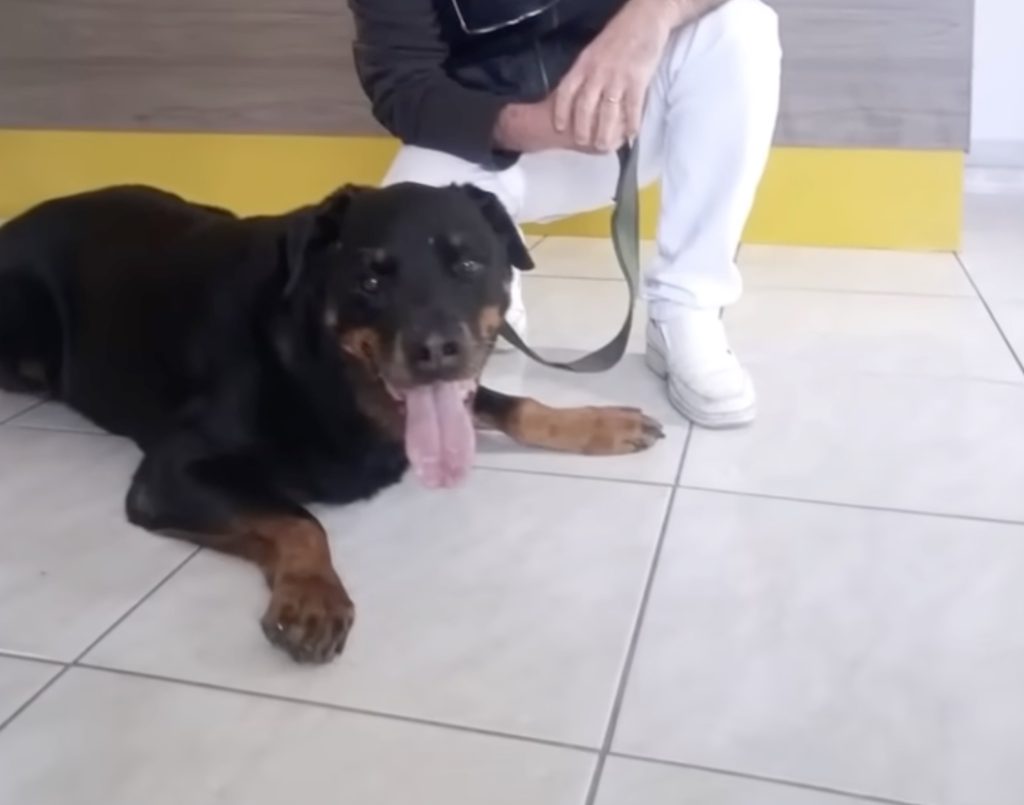
Some say dogs can’t understand gratitude the way humans do, but anyone who looked into Samson’s eyes knew otherwise. His every glance, every gentle nudge of his nose, carried a silent message of thanks. He had once been thrown away, but love had found him again. And now, in a world that had once shown him cruelty, he was finally surrounded by kindness.
Samson’s story is a gentle reminder that hope is never lost—that even when life seems unbearably unfair, compassion can change everything. He is proof that broken hearts can mend, that trust can be rebuilt, and that love, once lost, can always be found again.


